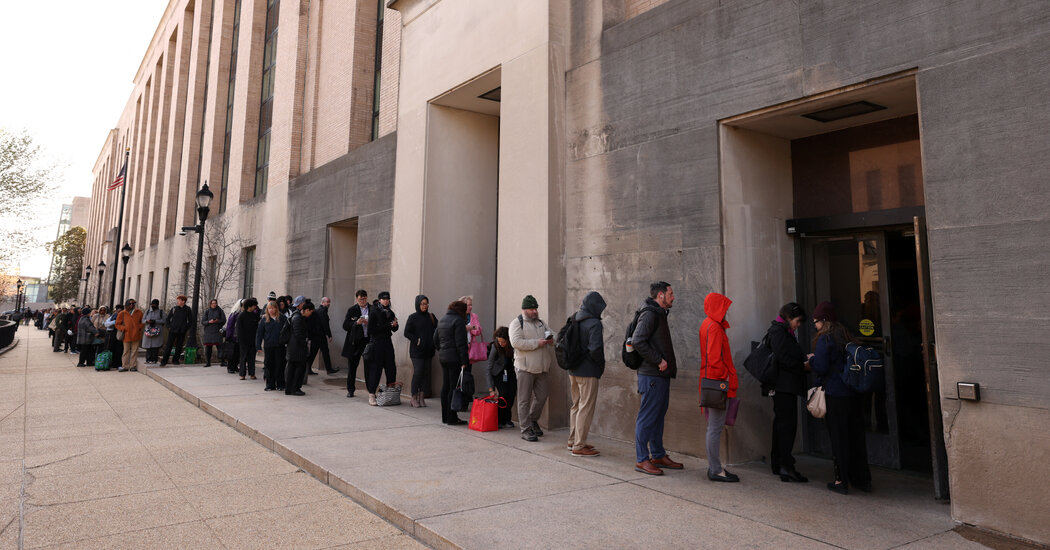A few days ago, Robert F. Kennedy Jr., the health secretary, embarked on a media tour to defend his decision to lay off thousands of his department’s workers.
He announced a plan last week to cut 10,000 jobs, in addition to the estimated 10,000 jobs cut through retirements and buyouts in the early weeks of the Trump administration.
Mr. Kennedy had called the Health and Human Services Department “the biggest agency in government, twice the size of the Pentagon, $1.9 trillion dollars,” during an interview with NewsNation. He went on to suggest that the department was doing little to improve the health of Americans, “with all the money that was being thrown at it, with all the personnel that were being brought in.”
H.H.S. does spend more than the Department of Defense, which has a discretionary budget of about $850 billion. But according to several budget experts, the overwhelming majority of the H.H.S. department’s $1.8 trillion budget is not spent on its staff.
Spending on personnel at the federal health agencies accounts for a small fraction of its budget — less than 1 percent, according to three budget experts. That includes the staff of the Food and Drug Administration, the Centers for Disease Control and Prevention, the National Institutes of Health and others.
The overwhelming majority of the money is spent through Medicare, for the health care of people older than 65, or through Medicaid, for people with low incomes. Those funds filter out to hospitals, clinics, nursing homes, dialysis centers, pharmaceutical companies, medical device makers and Medicare Advantage private insurance plans.
Melinda Buntin, professor of health policy and economics at Johns Hopkins University, said the $17.6 billion in costs for H.H.S. employees made up less than 1 percent of the department’s budget, and has risen in line with overall spending.
“I think that most people would be surprised by what a small share of Health and Human Services spending is for personnel, both their wages and compensation and benefits,” she said, noting that it made sense in the context of the agency’s spending on care.
Bobby Kogan, senior director of federal budget policy at the Center for American Progress, a left-leaning think tank, said Mr. Kennedy’s framing was “incredibly misleading.”
“It would leave someone with a super wrong understanding of what is going on really,” Mr. Kogan said. “The only story of what’s going on in H.H.S. is that we have a huge increase in the elderly population.”
An H.H.S. spokesman said the work force reductions are meant to cut $1.8 billion a year in federal spending, and that the amount is significant.
The Administration for Children and Families, another agency within H.H.S., also spends billions of dollars on services to the public. It operates Head Start programs, foster care, Temporary Assistance for Needy Families, formerly known as welfare, and care homes for unaccompanied minors from other countries.
Chris Towner, policy director for the Committee for a Responsible Federal Budget, made his own calculation, also concluding that H.H.S. staff costs appeared to be shy of 1 percent of the department’s spending. The figure could be slightly higher, he said, given the number of health agency workers with advanced degrees.
So far, the Trump administration has talked about fraud in the federal government repeatedly — though not the type that’s long been a target in Congress. Lawmakers have repeatedly raised the idea of reeling in Medicare Advantage insurance plans, which were estimated to overcharge Medicare by tens of billions of dollars a year.
